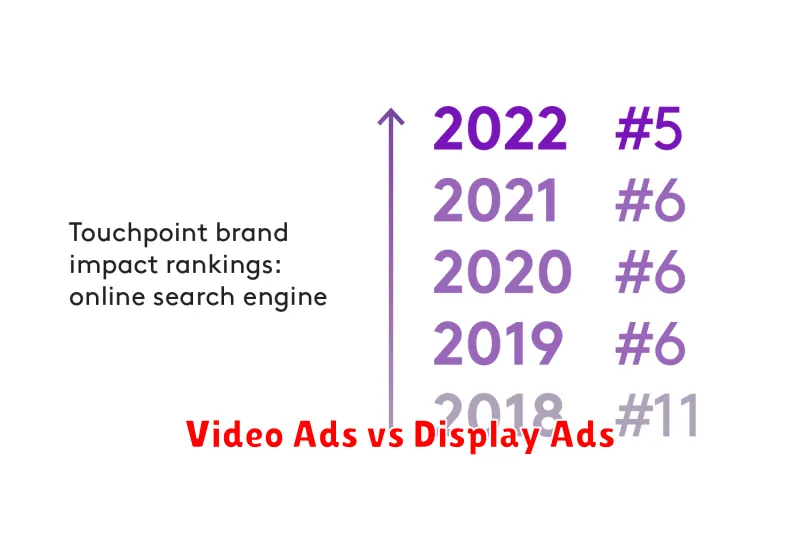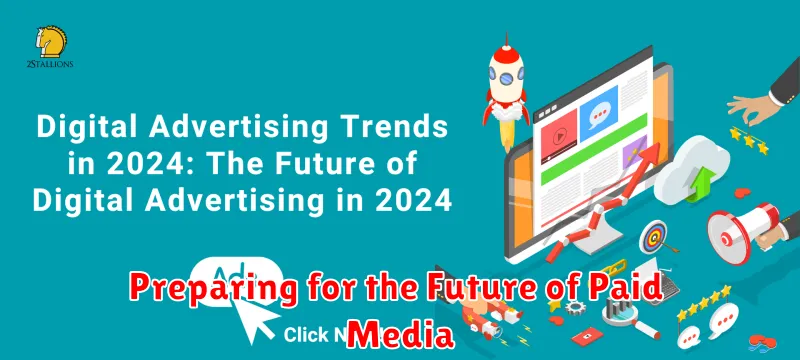The digital advertising landscape is in constant flux, evolving at a breakneck pace. Staying ahead of the curve is crucial for businesses looking to maximize their return on investment (ROI) and connect with their target audience effectively. This article explores the key digital advertising trends anticipated to dominate in 2025, providing insights to help businesses prepare for the future of advertising. We’ll delve into emerging technologies, shifting consumer behaviors, and innovative strategies that will shape the digital advertising landscape. Understanding these digital advertising trends is essential for crafting successful campaigns in the years to come. Topics covered will include the rise of artificial intelligence (AI) in advertising, the growing importance of short-form video, the continued evolution of influencer marketing, and the increasing focus on privacy and data security.
From the metaverse to the rise of retail media networks, the future of digital advertising promises to be both exciting and challenging. Businesses that embrace these digital advertising trends and adapt their strategies accordingly will be best positioned for success. This article will provide a comprehensive overview of the key digital advertising trends to watch in 2025, including programmatic advertising advancements, the increasing significance of mobile advertising, the growing adoption of augmented reality (AR) and virtual reality (VR) experiences, and the ongoing evolution of search engine optimization (SEO) and search engine marketing (SEM). By understanding these trends, businesses can develop digital advertising strategies that are innovative, effective, and future-proof.
The Shift Toward AI-Driven Ads
Artificial intelligence is rapidly transforming the digital advertising landscape. In 2025, expect a significant shift toward AI-driven advertising solutions. Automated bidding and campaign optimization, powered by machine learning, will become increasingly sophisticated, leading to more efficient ad spending and improved ROI.
Beyond optimization, AI will play a larger role in personalization. Algorithms will analyze user data more effectively, allowing advertisers to target specific demographics with tailored messages and creative elements. This enhanced personalization will lead to more relevant ads for consumers and higher conversion rates for businesses.
Creative generation is another area ripe for AI disruption. Expect to see tools that can automatically generate ad copy, visuals, and even entire campaigns, allowing marketers to scale their efforts more efficiently.
Video Ads vs Display Ads

Video ads are predicted to continue their rise in popularity. They offer engaging storytelling and high impact, especially with the growth of short-form video platforms. This format excels at building brand awareness and driving emotional connections.
Display ads, while still relevant, face the challenge of “banner blindness.” However, advancements in rich media formats like interactive banners and native advertising offer opportunities to recapture audience attention. Display ads remain a cost-effective option for reach and retargeting.
Choosing between the two depends on campaign objectives. For brand building and engagement, video often takes the lead. For retargeting and broader reach, display ads can be a powerful tool.
Mobile-First Ad Strategies
With mobile usage continuing to dominate, a mobile-first approach to advertising is no longer optional, but essential. This means designing ad campaigns specifically for mobile devices, considering factors like smaller screens, shorter attention spans, and location-based targeting.
Key strategies include prioritizing mobile-friendly ad formats like in-app ads and short-form video. Optimizing landing pages for mobile is crucial, ensuring a seamless user experience from ad click to conversion.
Leveraging mobile-specific data, such as location and app usage, allows for hyper-targeted campaigns, delivering relevant ads to the right audience at the right time.
Privacy and Tracking Challenges
The digital advertising landscape is facing increasing scrutiny regarding user privacy and data collection. Regulations like GDPR and CCPA are driving significant changes, pushing for greater transparency and user control. This presents a significant challenge for advertisers reliant on traditional tracking methods.
The phasing out of third-party cookies and the rise of privacy-focused browsers further complicate targeted advertising. Advertisers must adapt to these changes by exploring privacy-preserving solutions like contextual advertising, federated learning of cohorts (FLoC), and differential privacy. Successfully navigating this evolving landscape requires a proactive approach and a commitment to ethical data practices.
Preparing for the Future of Paid Media

The future of paid media hinges on adaptability and integration. Marketers must prepare for a landscape increasingly influenced by automation and AI. This includes understanding and leveraging programmatic buying, optimizing campaigns for voice search, and personalizing ad experiences through granular data analysis.
Privacy will play a crucial role. As users demand greater control over their data, marketers need to prioritize ethical data collection and utilization. Transparency will be key in building and maintaining consumer trust.
Measurement will also evolve. Moving beyond traditional metrics like clicks and impressions, future success will depend on measuring the full customer journey and demonstrating tangible ROI.

